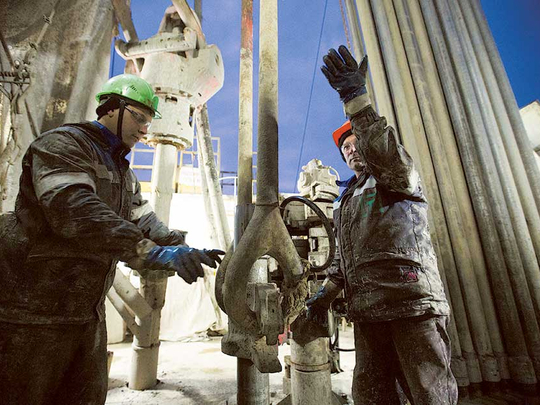
Moscow: Russia is sticking with an assumption that oil will average $40 a barrel in the next three years and won’t take a bait by revising its budget outlook after a preliminary agreement by Opec on its first production cut in eight years, according to Finance Minister Anton Siluanov.
While crude is trading near $50 after Wednesday’s announcement, heading for the first September increase since 2010, “we know prices are adjusted after such statements,” Siluanov told reporters in Russia’s Black Sea resort of Sochi. The price of Russia’s main export blend Urals used to calculate the country’s budget “was and remains” at $40 a barrel, he said.
“You think it’s stabilised?” Siluanov said. “We need to see how realistically the decisions will be implemented.”
Although the world’s biggest energy exporter has signalled it’s willing to join efforts with Opec to control global supply, it’s on course to pump oil at a post-Soviet record in September, adding as much as 400,000 barrels a day to the country’s output. The surprise deal, which will see the Organisation of Petroleum Exporting Countries reduce production to a range of 32.5 million to 33 million barrels a day, sent oil surging more than 5 per cent.
For a story on how the Opec output deal was completed, click here.
The market was caught by surprise after Saudi Arabia and Iran had signalled before the meeting that an accord was unlikely. Opec now faces the challenge of implementing the cuts, with Goldman Sachs Group Inc. and Morgan Stanley expressing scepticism that it can be completed. Prices may struggle to hold above $40 a barrel unless Opec acts, Citigroup Inc. predicts.
Already running its widest deficit since 2010 this year after oil’s collapse, Russia is preparing its budget for the next three years. The Finance Ministry has proposed a fiscal gap of 3.2 per cent of gross domestic product in 2017. It then plans to reduce the shortfall by one percentage point each year to balance the budget by 2020.
The deficit will be wider this year than earlier forecast and may increase to as much as 3.7 per cent of GDP, beyond the earlier estimate of 3.2 per cent, according to Siluanov.
Should oil trade above $40, “we’ll spend less from reserves — that’s our approach,” Siluanov said. “On the other hand, output limits aren’t the only factor that affects the price of oil. There’s also the issue of global demand, how the world economy will develop — that will also affect pricing.”
Another question is how the US shale industry will react, according to Siluanov.
“That’s also a large supply volume, because shale projects very quickly get turned around,” he said. “Which is why we can see additional supply on the oil market.”
Brent crude, which is used to price Urals, dropped 17 cents to $49.07 a barrel in London. The price of oil in roubles is at 3,078, compared with the level of 3,165 which Russia used as a basis for this year’s budget.
Oil will need to hold above $50 a barrel for months before US companies commit to more spending, according to analysts at firms including S&P Global Platts and Oppenheimer & Co. The number of rigs targeting oil in the US climbed to 418 in the week ended Sept. 23, the highest level since February, according to data from Baker Hughes Inc.
Budget Rule
While keeping its fiscal policy tight, Russia has also been revisiting a mechanism suspended this year that capped spending based on a backward-looking average for oil. The so-called budget rule, which would prevent the government from spending surplus revenue above a preset oil price, aims to insulate the economy from the ups and downs in crude and shield the exchange rate by withdrawing all additional income into reserves. Siluanov said last week that the price of oil for the policy should also be set at $40 a barrel.
Russia’s budget projects inflation at 4 per cent in 2017-2019 and assumes the rouble will average 67.5 against the dollar next year, weakening to 68.7 in 2018 and 71.1 in 2019, according to Siluanov. The rouble traded 0.4 per cent stronger at 62.86 to the US currency as of 8:20pm in Moscow on Friday.
“At higher oil prices, we’ll see a stronger exchange rate,” Siluanov said. “We shouldn’t make the budget dependent on external conditions and risks linked to them.”












